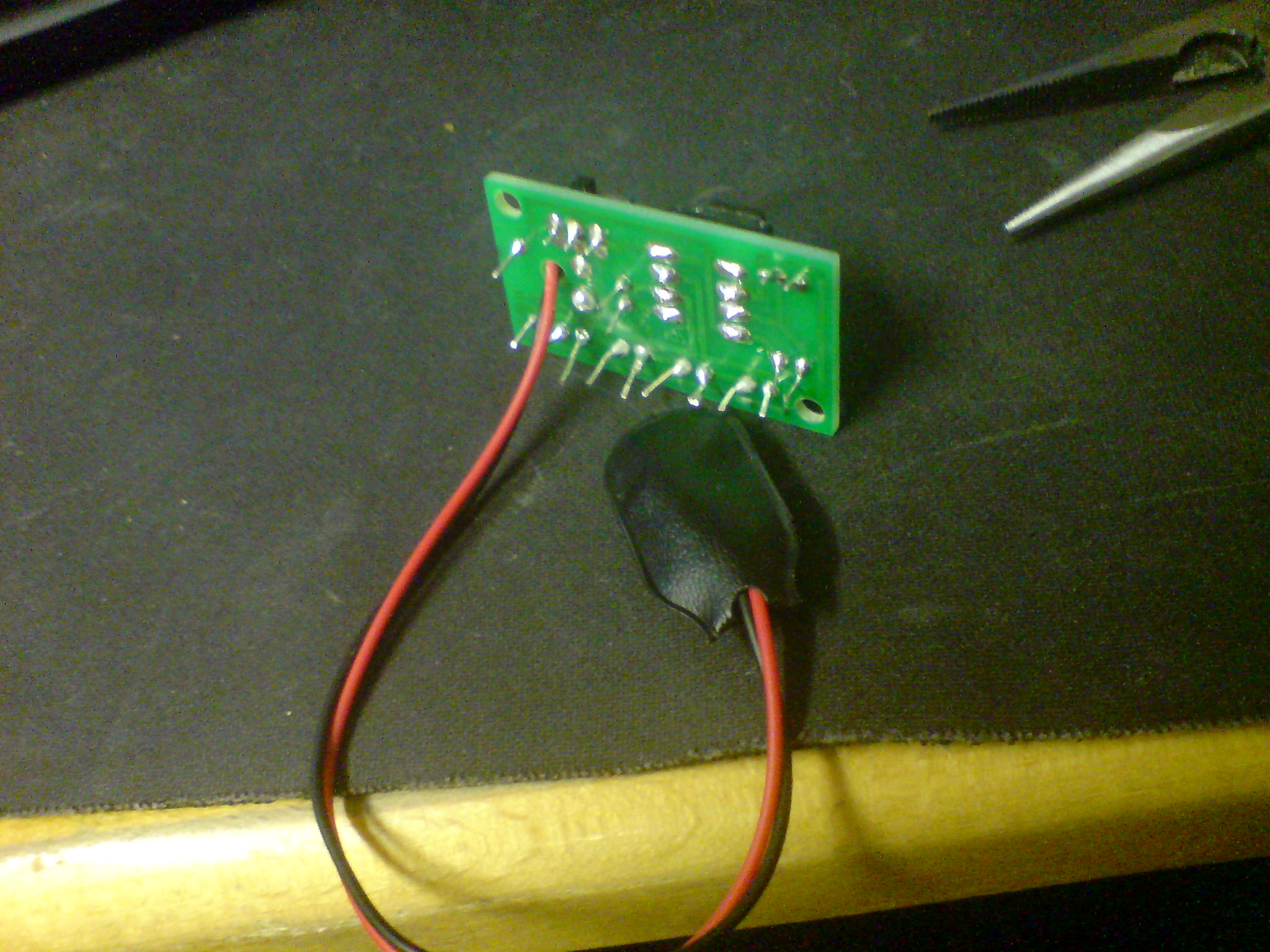Hi Sam,
OK - let me try and explain a really basic 555 astable (constantly cycling on and off) circuit... This circuit uses the 555 chip, a couple of resistors, and a capacitor. Here's the schematic for the circuit I'm describing... Don't worry about all the technical stuff on that page, just try and follow my description on the diagram.
http://www.kpsec.freeuk.com/555timer.htm#astable
Firstly, think of the chip itself as being divided into 3 parts - part one just sits there and monitors a voltage (via pins 2 & 6), part three (coincidentally pin 3) is the output voltage that drives the rest of your circuit (in your case, the 4 LEDs - it may not be powerful enough to do this on its own - so you may have some additional components on your board to help with that, but they are nothing to do with the astable circuit). Part two sits in the middle and is basically just a couple of switches.
To start with, the voltage runs through the two resistors (R1 & R2) and starts charging the capacitor (C1). Part one of the chip is watching the voltage on that capacitor as it starts to charge up. When it gets to a certain level (about 2/3 of +Vs, where +Vs is your supply voltage), it gives part two a nudge and says "hey buddy, flip your switches... NOW!".
Now, one of those switches connects your output (pin 3) directly to supply voltage (+Vs) on pin 8 - in other words, the output is switched on and your LEDs light up - yay!! At the same time, the other switch connects the discharge pin (pin 7) to the 0v side of your circuit on pin 1. This effectively routes the voltage that was charging the capacitor through a much easier route of just one resistor and then straight to 0v (you remember that electricity will always find the easiest route through a circuit - the famous "path of least resistance"). This removes the voltage from the capacitor, and stops it from charging.
When the voltage is removed from the capacitor, it starts to DIScharge what it has stored in it (I guess that's why pin 7 is called the discharge pin), and the voltage now starts draining out of the capacitor. Remember pins 2 & 6? Well, they are still monitoring the voltage, except now it is falling instead of rising. When the voltage
falls to a certain level (about 1/3 of +Vs), it gives part two a nudge again and says "hey buddy, flip those switches back will ya?".
So the output pin 3 is disconnected from +Vs (not sure if it is switched over to 0v instead or just left disconnected - probably the former - but that's not too important here) and your LEDs switch off - boo hoo. The other switch gets flipped as well, and that forces the electricity to go back though the harder route of both resistors and into the capacitor again. Guess what - that means it starts charging again, and the voltage starts to rise. Pins 2 & 6 are still sitting there, watching and waiting till the voltage reaches 2/3 +Vs, and so the process goes round again - on... and on... and on... and... you get the picture.
So that's
roughly how it works (note I say "roughly" before anyone starts flaming me for any inaccuracies). The other thing to know is that by changing the values of those two resistors and the capacitor, you can control the frequency of your LEDs flashing, and also the amount of time in each flash that they are on and off. I won't go into all the maths and physics around that - partly because there are a million online calculators that will work out what you need to achieve any given result, and partly because I don't understand it either

So there you go - you (hopefully) now understand your first circuit - sorry it took so many words to describe

and apologies to all those that understand circuits far better than me, and can spot a million flaws in my description. There are many variations and elaborations on this most basic astable, and you may well have a few other components though looking at your picture again, I think I only see one extra resistor, which is probably just to control the current flowing through the LEDs (here's a link to a good resource for calculating the value of resistor to get an LED to light correctly even when it is connected to the wrong voltage
http://www.theledlight.com/ledcircuits.html
)
All the best, and good luck
Graham.


